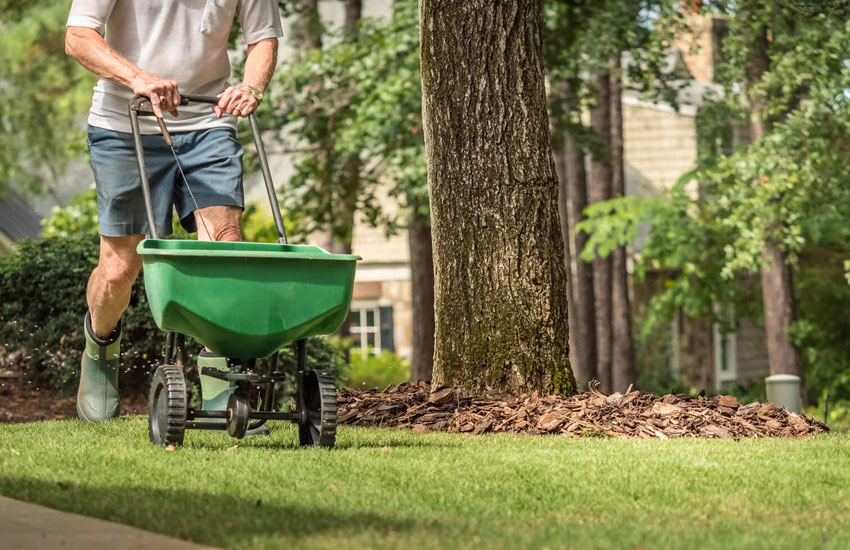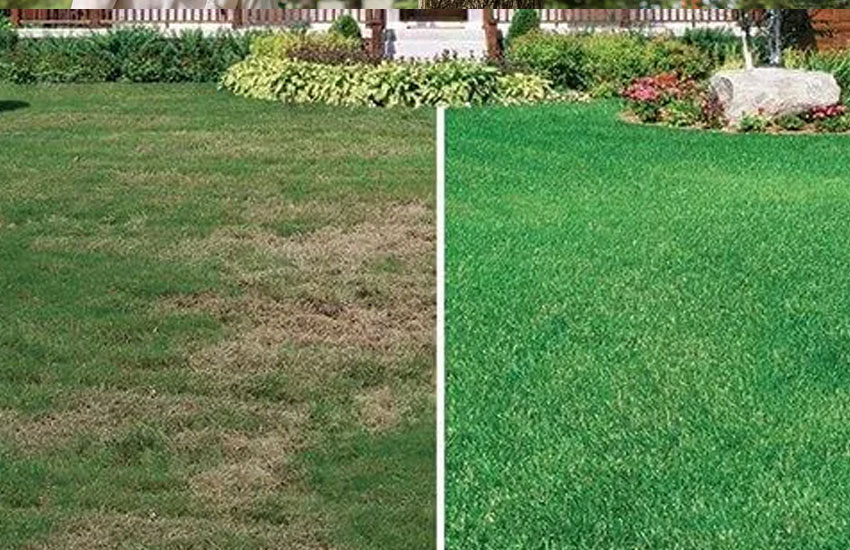Lawn Seeding Services Vadnais Heights Minnesota | Landscape Contractor
Landscaping is an essential aspect of home design that can significantly enhance the aesthetic value of a property. However, transforming outdoor spaces into stunning oases requires the expertise of skilled landscaping professionals who have experience in creating unique and functional designs. One such contractor based in Vadnais Heights, Minnesota offers exceptional landscaping services that cater to both front and backyard spaces.
This team of landscapers has a reputation for trustworthiness and customer satisfaction, which sets them apart from other contractors in the industry. They specialize in various aspects of landscaping design, including pools, patios, stone walls, and waterfalls. Moreover, they only use high-quality materials to ensure clients receive outstanding results that exceed their expectations. With competitive pricing and the ability to accept estimate requests, this contractor makes it easier than ever before to bring your landscaping dreams to life.


Lawn Seeding Services
Lawn seeding services provide a valuable solution for homeowners looking to improve the health and appearance of their lawn. Whether you are dealing with sparse grass, bare patches, or poor soil quality, lawn seeding can help rejuvenate your yard and create a lush green space that enhances your home's curb appeal.
To achieve optimal results with lawn seeding, it is important to work with experienced professionals who have the knowledge and expertise needed to assess your lawn's unique needs and recommend appropriate solutions. From preparing the soil for planting to selecting the right type of grass seed for your specific region and climate conditions, these experts can guide you through every step of the process to ensure that you get the best possible outcome. In this article, we will explore some of the key benefits of lawn seeding services as well as some tips on how to prepare your lawn for successful planting and ongoing maintenance.
Benefits of Lawn Seeding Services
The implementation of professional lawn seeding services can result in a luscious, vibrant landscape with improved soil quality and decreased risk of erosion. One of the benefits of lawn seeding is that it introduces new, healthy grass varieties to your lawn. Since most lawns consist of just one or two types of grasses, they are more susceptible to disease and pests. By introducing different types of grass through seeding, you can increase the overall health and resilience of your turf.
Another benefit is that seeded lawns have deeper root systems than those grown from sod. This means that they can access water and nutrients from deeper in the soil profile, making them better equipped to withstand periods of drought or extreme weather conditions. In addition, deep-rooted lawns are less prone to erosion since their roots help hold soil in place.
Lastly, lawn seeding services can improve soil quality by reducing compaction and increasing organic matter content. Over time, foot traffic and heavy equipment use can cause soil to become compacted which makes it difficult for roots to penetrate deeply. Seeding introduces new organic matter into the soil as well as helping loosen compacted soils which improves drainage and allows air movement throughout the root zone.
Overall, investing in professional lawn seeding services can provide numerous benefits for your landscape including increased variety and resiliency in turfgrass species, improved root depth for better water uptake during challenging weather conditions, lessened risk of erosion due to deep rootedness within the grass system itself plus added organic matter content will make it easier for roots at all levels!
Assessment of Lawn Needs
Assessing the requirements of a particular area involves evaluating factors such as soil quality, sunlight exposure, and moisture levels. These factors are crucial in determining the appropriate seeding method and type of grass that should be used to achieve optimal results. Soil testing is usually the first step in assessing lawn needs as it provides information on nutrient deficiencies, pH levels, and organic matter content. It also helps determine if any remedial action is required before seeding.
Sunlight exposure is another essential factor to consider when assessing lawn needs. Different types of grasses require varying amounts of sunlight to thrive. For example, warm-season grasses such as Bermuda grass and Zoysia grass prefer full sun exposure while cool-season grasses like Kentucky bluegrass and fescues can tolerate some shade. Understanding the amount and duration of sunlight an area receives helps select a suitable type of seed that will grow well in those conditions.
Moisture levels are also critical when evaluating lawn needs because they affect germination rates and overall growth rate. Overwatering or underwatering can lead to poor growth or even death of newly seeded lawns. It is important to strike a balance between watering enough to keep the soil moist but not too much that it becomes saturated with water. This balance will vary depending on climate conditions which influence evaporation rates, humidity levels, precipitation frequency among other things that can impact moisture retention in the soil. By assessing these three factors: soil quality, sunlight exposure, and moisture levels, one can determine what kind of seed mixtures are best suited for their specific location resulting in a lush green lawn that thrives year-round with proper care.
Preparation of Lawn for Seeding
Proper preparation of the soil is crucial in ensuring optimal growth and health of the selected grass species, ultimately leading to a visually appealing and thriving landscape. Before seeding, it is important to remove all weeds, rocks, and debris from the area. This can be done by hand or with specialized equipment such as a rototiller. The soil should then be loosened to a depth of at least 6 inches to allow for proper root development.
Once the soil has been cleared and loosened, it is important to test its pH level. Soil pH affects nutrient availability for plants and can greatly impact their growth. A neutral pH level of around 6-7 is ideal for most grass species. If the pH level is too low or high, lime or sulfur may need to be added to adjust it accordingly.
Before seeding, it is important to add organic matter such as compost or peat moss to improve soil texture and fertility. This will help retain moisture and provide essential nutrients for plant growth. Once these steps have been taken, the area should be raked smooth and leveled before seeding can begin. By following these preparation steps carefully, one can ensure that their lawn will grow healthy and lush for years to come.
Seeding Process
After preparing the soil, the next step in establishing a healthy and thriving landscape is to evenly distribute the selected grass seeds throughout the area. This process may seem simple, but it requires careful planning and execution to achieve optimal results. Here are some key steps that lawn seeding services follow when seeding a lawn:
- Measure the area: The first step in any seeding project is to accurately measure the area that needs to be seeded. This will help determine how much seed is needed and ensure that it is distributed evenly.
- Choose the right seed: Lawn seeding services choose grass seed based on several factors, including climate, soil type, and intended use of the lawn. It's important to select high-quality seed that will thrive in your specific environment.
- Prepare for planting: Before distributing seed, it's essential to prepare the soil by removing debris and loosening compacted areas. This allows air and water to penetrate more easily, which promotes healthy root growth.
- Planting technique: There are various techniques for distributing seed, including using a broadcast spreader or hand-seeding. Lawn seeding services typically use equipment designed specifically for this purpose to ensure even distribution.
By following these steps with precision, lawn seeding services can establish a lush green lawn that enhances curb appeal while providing a relaxing outdoor space for homeowners.
Maintenance of Your Lawn
Regular maintenance of a well-established lawn involves several essential tasks that promote healthy growth and prevent common issues such as weed and pest infestations. One crucial aspect of lawn maintenance is watering. Adequate water supply is vital to keeping the grass green, lush, and healthy. The frequency of watering depends on various factors such as weather conditions, soil type, and grass species. Ideally, lawns require about 1-2 inches of water per week. However, it's important to avoid overwatering as this can lead to shallow roots and increased susceptibility to disease.
Another critical task in maintaining a healthy lawn is fertilization. Fertilizing helps replenish depleted soil nutrients necessary for plant growth and ensures that the grass receives adequate nourishment throughout the growing season. Nitrogen is one of the most important nutrients for promoting healthy grass growth, and it's typically included in most commercial fertilizers. However, it's crucial to follow proper application rates based on your specific lawn needs because excessive fertilizer applications can cause nutrient runoff and environmental pollution.
Mowing regularly also plays a significant role in maintaining a beautiful lawn. Proper mowing practices involve cutting no more than one-third of the blade length at each session to avoid stressing out the plants unnecessarily. Additionally, varying mowing direction helps prevent matting down or creating ruts on the turf surface while ensuring even distribution of clippings for natural composting back into the soil. Overall, regular maintenance practices are critical not only for sustaining an attractive landscape but also promoting environmental health by reducing chemical usage from pest control measures while minimizing water waste through efficient irrigation practices.
Frequently Asked Questions
How long does it typically take for the grass seed to start growing?
The germination time for grass seeds varies depending on factors such as temperature, soil moisture, and seed type. Typically, it can take anywhere from 5 to 30 days for the first signs of growth to appear.
Can I still use my lawn during the seeding process?
During the lawn seeding process, it is recommended to avoid using your lawn until the new grass has fully grown and established. This can take several weeks, depending on various factors such as weather conditions and type of grass seed used.
Will the seeded grass be resistant to pests and diseases?
Grass seed varieties differ in their susceptibility to pests and diseases. Resistant grass seed types can reduce the likelihood of disease or pest infestations, but no grass type is entirely immune. Proper lawn maintenance, such as regular mowing and watering, can also help prevent these issues.
Is there a specific time of year that is best for lawn seeding?
The ideal time for lawn seeding varies depending on the region and climate, but generally occurs in late summer or early fall. Optimal conditions include cool temperatures and adequate moisture to promote germination and establishment of the new grass.
How often do I need to water the newly seeded lawn?
Watering a newly seeded lawn is crucial for successful germination. The soil should remain consistently moist, but not waterlogged. Water daily for the first 2-3 weeks, then gradually reduce frequency to allow deeper root growth.
ADDITIONAL SERVICES WE OFFER IN VADNAIS HEIGHTS MN:
HELPFUL INFO ABOUT VADNAIS HEIGHTS, MN
Vadnais Heights is a city in Ramsey County, Minnesota, United States. The population was 12,302 at the 2010 census.Wikipedia • Things to do • Google map
Landscaping with Passion, Precision, and Purpose
Our professional lawn and landscaping maintenance services have been designed with you in mind.
